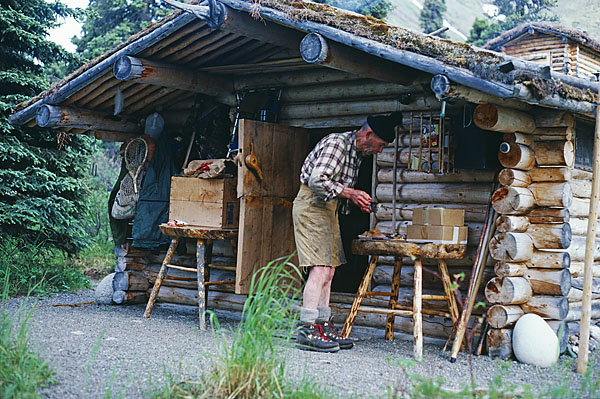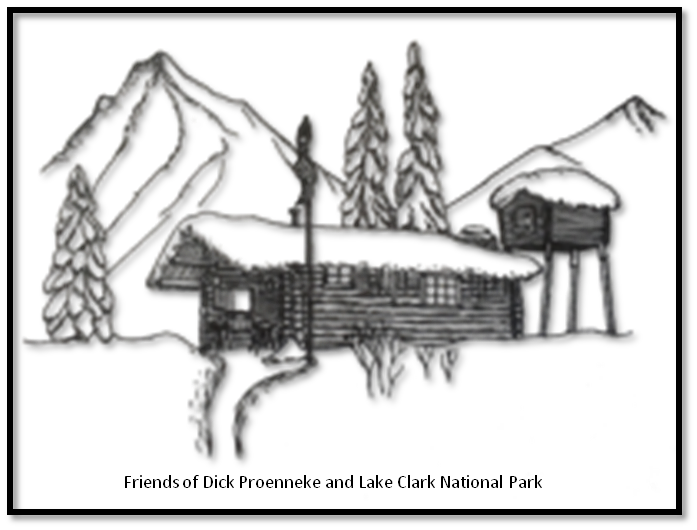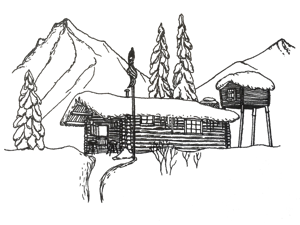
Dick Proenneke preparing lake trout fillets at his cabin in 1983. Photo Copyright Fred Hirschmann.
Dick Proenneke’s Life and Legacy
In the summer of 1968, using only hand tools, 52 year-old Dick Proenneke constructed his quintessential Alaskan log cabin along the shores of idyllic Twin Lakes (see map above). For the next 31 years, Dick resided in his 11 x 15 foot cabin, living in harmony with nature as he intimately recorded in writing and on film the cycle of seasons in this remote Alaskan wilderness.
Dick relished the wild character of the Twin Lakes region, working closely with the National Park Service to help create the establishment in 1980 of 4-million-acre Lake Clark National Park and Preserve. Through hiking and paddling in summer and snowshoeing in winter, Dick explored the grand country of mountain
peaks and alpine valleys surrounding his humble abode.
Similar to John Muir’s daily packing of a “crust of bread,” Dick powered his hikes with “sticks of dynamite,” his concoction of sourdough pancakes stuffed with peanut butter and raw onions. Some of those hikes were monumental in nature, traversing 35 miles in a single day to visit gold mining friends Victoria and Terry Gill in the Bonanza Hills or crossing 25 miles of mountainous terrain to go to former Governor and First Lady Iay and Bella Hammond’s homestead on Lake Clark.
Dick was keenly aware of the coming and goings of his closest neighbors, the myriad wildlife inhabiting the Twin Lakes region. He chronicled the springtime emergence of sow grizzlies and their cubs from mountain dens. He witnessed the Mulchatna caribou herd grow to 200,000 animals. He regularly climbed to the mineral lick between Lower Twin and Turquoise Lakes observing the Dall sheep congregations there.
Many people liken Dick to a modern-day Henry David Thoreau. Dick certainly embodied Thoreau’s philosophy of simple living close to nature. But unlike Thoreau who resided a mere two years by Walden Pond, Dick spent three decades by himself at wild and remote Twin Lakes.
Through the publication of One Man ’s Wilderness with writer Sam Keith, the filming of One Man ’s Alaska released by the National Park Service, and four films about Dick produced by Bob Swerer and often shown on PBS, millions of people have learned of–and been inspired by–Dick’s simple life in the wilderness of Lake Clark National Park.

